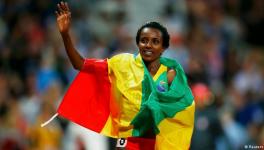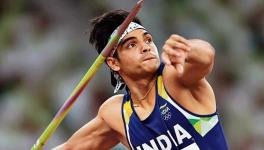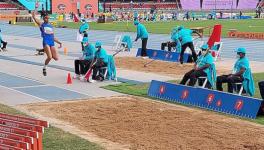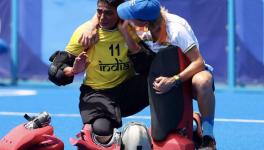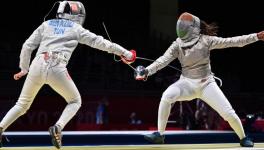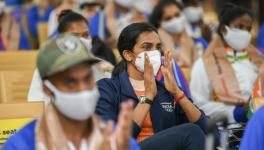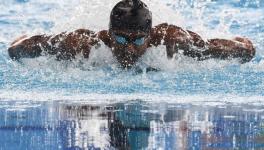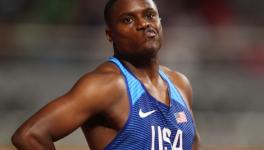Caster Semenya vs IAAF: CAS Ruling a Case of Protecting Majority By Targeting the Minority
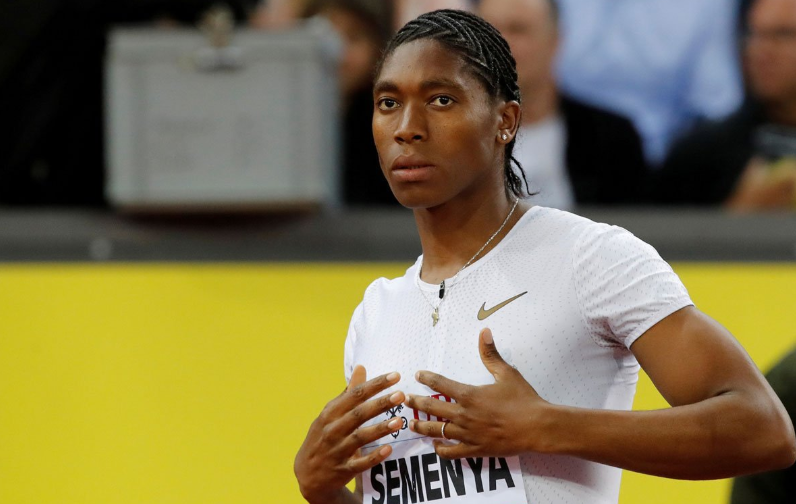
Caster Semenya’s legal and scientific team are mulling to go for an appeal against Court of Arbitration for Sport’s (CAS’s) ruling in the DSD rule case against International Association of Athletics Federations (IAAF).
Caster Semenya lost the landmark case against International Association of Athletics Federations’ (IAAF’s) the Differences of Sex Development (DSD) rule at the Court of Arbitration for Sport (CAS) in Lausanne on May 1. The South African double Olympic gold medallist’s legal and scientific team is mulling an appeal. However, as of now, the judgment means Semenya and other middle distance runners with DSD will have to clinically lower their naturally high levels of testosterone to compete in middle distance (IAAF’s rule stipulates events between 400m and the mile) races in elite competitions.
The irony of CAS’ ruling lies early on in the judgement, in the sixth paragraph to be exact, where the three-member panel observes that the IAAF’s DSD rule is “discriminatory” but “such discrimination is a necessary, reasonable and proportionate means of achieving the IAAF’s aim of preserving the integrity of female athletics”. The Court, with the judgment, has legitimised discrimination against a minority for the benefit of the majority.
Read More | Caster Semenya vs IAAF: CAS Verdict Will Forever Change Women’s Sport
While the judgment, through which the CAS has further muddled things surrounding an already skewed rule, has many implications on women athletes across sport in general, let us take a look at what it means to the plaintiff in the landmark case.
The IAAF, soon after the judgment, said its policy would come into place on May 8. That means, Semenya will have to take hormone therapy drugs, including oral contraceptives, for the next six months starting next week, to lower her testosterone levels to 5 nanomoles\litre (nm/L), which is the stipulated upper limit by the IAAF. As per studies, the average testosterone value in a women is 0.12-1.79 nm/L, while for men it is 7.7-29.4 nmol/L.
If Semenya plans to compete at the next big-ticket event in athletics — the IAAF World Championships in Doha in September — she will have to take a blood test now, and then start taking medication immediately so that the process of lowering happens as per IAAF’s set guideline, adhering to its six month monitoring clause.
The torture — both mental and physical — this process would expose the athlete to is beyond comprehension even to IAAF’s experts who have proposed this system. At the outset, it seems no better than the humiliating sex determination tests athletics competitions organisers used to subject women to in the 1950s and ’60s when they were forced to go naked in front of experts, who would examine their genitals and other feminine attributes before giving the “all fit” certificate.
While the processes in place last century body-shamed and physically humiliated female athletes (all because of one recorded incident of a man competing as a woman), on this side of the millenium, nothing seems to have changed for women in sport. In fact, things have got worse as it involves physical as well as mental torture.
Read More | Jithin Paul vs NADA: Doping and the Indian Athlete
The other option for Semenya, 28, is to step up to a distance above or below the range of IAAF’s DSD rule. She has already competed in a 5000m race, winning the South African nationals, but with a timing that would make her a backmarker at the IAAF Worlds. Experts believe that the hormone therapy would lower Semenya’s performance by around five to seven seconds in the 800m, which will put her out of contention at the Worlds.
Let’s get this straight though. The potential dip in Semenya’s performance could not just be linked to the lowering of testosterone in her bloodstream. It would be due to the cumulative effect to months of hormonal changes, and running the race at the end of it, in essence, with a body completely unknown to her.
The scientific community, except the IAAF’s experts perhaps, concur there is no conclusive evidence that testosterone level is the biggest factor determining athletic performance. The science of performance is vast, with a lot of grey area left to explore still, and so the judgement, while opening doors to “discrimination” on the premise of scientific fairness, has created avenues for further confusion, among other things.
Video | India to Host FIFA Under-17 Women’s World Cup; But Do Women Get to Play?
For instance, the CAS, in its judgment, expressed apprehension at the lack of conclusive evidence in the advantage testosterone gives to athletes in the 1500m and mile race, Semenya’s second event. The Court has insisted that the rule should be dynamic, and open to changes in the future, as per new and complete scientific evidence. But then, since the IAAF has put a blanket rule covering distances specifically involving Semenya, one can’t help but wonder whether there is a bit of specific targeting involved.
Semenya has been a raging issue for IAAF every since she burst onto the international scene at the World Championships in Berlin in 2009. She won gold, the IAAF tested her gender soon after the championships, and her ordeal began… and her fight is set to continue. Unless, of course, she decides to give up on her career, and the life that defines her.
We don’t have to go too far for stories on how athletics have been harsh to women who are endowed differently due to no fault of theirs — sprinter Dutee Chand and Santhi Soundarajan, the Indian 800 and 1500 metre champion in the mid-2000s, immediately come to mind.
Read More | MR Poovamma: Beating Team With Fastest 400m Runner in the World Makes Relay Gold Special
While Dutee successfully fought a case against the IAAF at the CAS, managing to get the governing body to scrap the hyperandrogenism rule, Santhi’s story never had a bright side post her silver medal at the 2006 Asian Games in Doha. She was disqualified following tests which deemed her as a biological male, pushing her athletics career and life into a downward slide into obscurity.
Semenya, on her part, is determined that her future will not be governed by tests and unnatural interventions to change who she was born as.
“I know that the IAAF’s regulations have always targeted me specifically,” she was quoted in the media. “For a decade, the IAAF has tried to slow me down, but this has actually made me stronger. The decision of the CAS will not hold me back. I will once again rise above and continue to inspire young women and athletes in South Africa and around the world.”
Get the latest reports & analysis with people's perspective on Protests, movements & deep analytical videos, discussions of the current affairs in your Telegram app. Subscribe to NewsClick's Telegram channel & get Real-Time updates on stories, as they get published on our website.










